Makoto Shibata@bonapontaさんのツイートです。
――ほんとに墜落してる。
「ソロス氏日本売り」の噂、アベノミクスに飽きた投機筋 :マネー底流潮流:マネー :日本経済新聞 http://s.nikkei.com/1eGW14Q pic.twitter.com/9JYkMNf1wr〔8:18 - 2014年2月10日 〕――

脱原発、または、脱・原発依存に足を踏み込んだ
ドイツとアメリカに比べると
日本の凋落ぶりが
明らかです。
下記資料にあった、
そんな日本に対するジョージ・ソロスの言葉を
紹介します。
「What Japan is doing is actually quite dangerous because they are doing it after 25 years of just simply accumulating deficits and not getting the economy going」(日本は、25年間に及ぶ累積赤字の果て、経済を上向かせる材料が何もないのに、危なっかしいことをしている)
新年寄稿
「プロジェクト」の冒頭部分で、
彼は、
日本経済につき、
こう語っていました
( 2014/1/6 7:55付日経新聞記事「ソロス氏、2014年の世界経済を予測」参照)。
「日本の未曽有の量的緩和政策はリスキーな実験だ。経済成長が加速すれば金利は上昇して、公的債務返済のコストは維持できない規模になる可能性があるからだ。しかし安部首相は日本を緩やかに死に至らしめるより、その実験のリスクを取ることを選択した。そして日本国民の熱烈な支持から判断すれば、普通の日本人も、そのリスクを取る覚悟はできているようだ」
何か、
嫌みのようですね。
リスクを取る覚悟はできているか?
僕は出来てないです。
安倍某にすれば、
お札をジャンジャン刷れば、
大金持ちになった気がします。
その気分に乗じて
国富を食いつぶして行ってるわけです。
頭のいい日本国民が
それを知らないはずもなく、
彼を熱烈に支持しているということは、
国家経済が破れる
覚悟ができているんだろう
ということですね。
安倍某のする
放蕩の
お相伴に与りたいがために、
マスコミなど
完全に言いなりになっています。
外国から見たら、
日本人は、
未開民族そのものでしょうね。
さて、量的緩和政策の
どこがどう危ないかと言うと、
無理やり経済成長のアクセルを踏み込んで、
得られる結果は、
金利が急激に上昇するということです。
ために、国債等の
公的債務返済の目途が立たなくなってしまうのです。
参考までに言いますと、
財務省の発表では、
昨年末、国の借金は、
1017兆円になったとのことで、
国民一人あたりでは800万円になると計算されています。
しかし、今、御承知のように、
ものすごい勢いで人口が減っています。
他方で、借金は
毎年50兆円ずつ増え続けているわけです。
このことから断言できるのは、
次のことです。
一人あたりの借金は、
800万円どころか、雪だるま式に増えて行く
ということです。
対策として、
あるいは、ジジババから
財産を取り上げたらよいという考えも
あるでしょう。
現に、
自民党は、公的年金を
株の買い上げのため支出してます。
しかし、そんな仕手筋の真似事をして
累積赤字が解決するほど、
ことは、
そんな単純ではないでしょう。
財務省ではなく、
IMF/世銀統計では、全く違う姿が出てきている
と解説するのは、
「NEVADAブログ」です。
2月15日付けワールドレポートで解説して下さるそうです
(同サイト10日付記事「昨年末で国の借金1017兆円に」参照)。
☆ 記事URL:http://blog.livedoor.jp/nevada_report-investment/archives/4622308.html
最後に、
この人の言葉を紹介します。
自由の至言bot@hankyou0406 さんのツイートにありました。
――「借金して生産するのは、貧しい国が豊かになる方法である。借金して消費するのは、豊かな国が貧しくなる方法である」(シフ)〔4:37 - 2014年2月12日 〕――
〔資料〕
‘Abenomics’
socialistworld.net(/22/04/2013)
☆ 記事URL:http://www.socialistworld.net/doc/6270
Unprecedented stimulus package - a desperate gamble
Carl Simmonds, Kokusai Rentai (CWI Japan)
On April 4th the new governor of the Bank of Japan, Haruhiko Kuroda took the world of finance completely by surprise when he launched an unprecedented stimulus package. He announced the government would increase purchases of government bonds by \50 trillion ($520 bn) per annum. To put this into perspective, when adjusted for GDP size this is twice as large as the US Federal Reserve’s stimulus package.
Kuroda’s move has been cautiously welcomed by the heads of both the IMF and of the Japanese bosses’ organisation - the Keidanren. But there is a broader recognition by the more sober representatives of capitalism of what an extremely risky strategy the Japanese government has embarked upon. As little as six months ago, Keidanren representatives were warning of the dangers of this policy, defending the independence of the Bank of Japan and orthodox financial policies.
What lies behind this stunning reversal of policy?
Desperate times call for desperate measures as the adage goes. What was originally described as the “lost decade” of low growth and deflation has since become the lost twenty years. By some measures, prices have fallen by as much as 17% since 1997. For most of that time, the value of the Nikkei index has stood at less than a third of the value it hit at the height of the boom. The interest rate has been at 0.5% or less since the end of 1995. Post-1980 Japanese economic growth has averaged a measly 0.52%
For the last twenty years almost every instrument of capitalist economic policy has been tried by a succession of conservative governments. The monetarist policy of “qualitative easing”, in normal language, cutting interest rates to the present low levels, has done little to lift the economy. Keynesian attempts to use government expenditure on infrastructure and fiscal deficits to spend their way out of low growth were tried extensively up until 1997 and brought little relief.
There then followed an attempt at “quantitative easing” - in plain language, expanding the money supply. From 1992 until 2008 there were no less than 18 stimulus packages estimated at \205 trillion. Still these policies failed to bring back the high growth era. This policy was then thrown into reverse and we have seen the disastrous austerity policies pursued by successive governments and in particular that of Noda, increasing sales-tax in a period of stagnation. The failure of these policies to boost growth led to in turn to the return to power of the LDP (Liberal Democratic Party) led by the right-wing nationalist Abe.
“Abenomics”, as it has been dubbed by its critics, could be likened to gambling the family silver on the roulette table. Confronted by the complete failure of the predominant schools of capitalist economic doctrine to explain the present situation and provide policies to end the stagnation, Abe in ecumenical fashion, proposes, on an unprecedented scale, to adopt all of their "solutions" simultaneously in a desperate rush for growth. These policies include a 2% increase in fiscal spending - mainly on repairing and expanding infrastructure, a doubling of the money supply (Kuroda’s package) and a target of 2% inflation.
Abe is hoping that this increase in the money supply will lead to a fall in real interest rates and encourage companies and individuals to start spending. The threat of inflation means that if they don’t, the real value of their assets will fall. He is also hoping that this will lead to a fall in the value of the yen and boost exports by Japanese companies. What are the prospects for the success of his policies?
Prospects
With the election of the Abe government, the value of the Yen has declined by 27% over the last six months, though this has so far failed to do much to reverse the trade deficit. With most of Japan’s nuclear power plants lying idle in the aftermath of the Fukushima disaster, the yen’s fall has simply added to the cost of increased imports of fossil fuels. It is likely to take time before it filters through to boost exports. And there is also the likelihood that a fall in the yen will lead to devaluations by Japan’s competitors.
‘Abenomics’ has, however, led to a recovery of the stock market with the Nikkei index finally passing the 10,000 mark. The short term boost to the economy will probably be enough to ensure Abe’s victory in the upper-house elections in July and allow Abe to push ahead with his policy of constitutional revision. However, will the measures be enough to pull the Japanese economy out of its period of stagnation?
Firstly, the present situation is not due to Japanese banks and corporations being short of cash to invest. Overall, corporate Japan has an excess of savings. However, seeing a market that cannot support expansion of production, they have chosen to pay off interest-bearing debts rather than make the productive investments necessary for capitalism to achieve equilibrium. Where they have invested, it has often been to shift production overseas. This situation seems to be understood by Abe; at a recent meeting of the Council for Economics and Fiscal Policy he even went as far as to exhort employers to boost wages. A similar idea has also been suggested by the economist, Noriko Hama. However, under capitalism these calls are completely utopian. Why would Japanese capitalists voluntarily accept a reduction in profits?
It is by no means certain that even a stimulus of this size will achieve the target of 2% inflation. As Marx pointed out, if money circulates more slowly, then even a dramatic increase in money supply is not going to achieve an increase in demand. In the US “money velocity” has fallen to a 60 year low, and there is evidence that it is at historic lows in Japan too. Even if it were to succeed in pushing up prices, the new policy would be more likely to create a new bubble in the financial markets, rather than promote productive investment.
Hitting the inflation target that would not necessarily spell the end of the troubles. As George Soros put it, "What Japan is doing is actually quite dangerous because they are doing it after 25 years of just simply accumulating deficits and not getting the economy going".
Highest debt in the world
Government debt in Japan is now the highest in the world. As long ago as 2011, it stood at 230% of GDP. That this has not led to a Greek style crisis is due to the fact that most of the debt is owed to Japanese lenders rather than foreign financial institutions. However, interest on debt is currently 25% of government expenditure. Should interest rates rise with the development of inflation, this could be the trigger for a debt crisis. If inflation were to push interest rates up to as little as 2.8% then payments on the debt would equal total government revenue.
Abe’s gamble appears to be a long shot. It is a risky strategy that would not normally be contemplated by the sober representatives of Japanese capital. However, these are not normal times and to continue with previous policies also carries with it major risks. One thing is clear that a collapse of these policies will prove disastrous for the living standards of the people of Japan and in particular the Japanese working class. The Japanese ruling class fear above all the social explosions that economic collapse would bring. There will be no return to the relative social stability of the past.
――ほんとに墜落してる。
「ソロス氏日本売り」の噂、アベノミクスに飽きた投機筋 :マネー底流潮流:マネー :日本経済新聞 http://s.nikkei.com/1eGW14Q pic.twitter.com/9JYkMNf1wr〔8:18 - 2014年2月10日 〕――

脱原発、または、脱・原発依存に足を踏み込んだ
ドイツとアメリカに比べると
日本の凋落ぶりが
明らかです。
下記資料にあった、
そんな日本に対するジョージ・ソロスの言葉を
紹介します。
「What Japan is doing is actually quite dangerous because they are doing it after 25 years of just simply accumulating deficits and not getting the economy going」(日本は、25年間に及ぶ累積赤字の果て、経済を上向かせる材料が何もないのに、危なっかしいことをしている)
新年寄稿
「プロジェクト」の冒頭部分で、
彼は、
日本経済につき、
こう語っていました
( 2014/1/6 7:55付日経新聞記事「ソロス氏、2014年の世界経済を予測」参照)。
「日本の未曽有の量的緩和政策はリスキーな実験だ。経済成長が加速すれば金利は上昇して、公的債務返済のコストは維持できない規模になる可能性があるからだ。しかし安部首相は日本を緩やかに死に至らしめるより、その実験のリスクを取ることを選択した。そして日本国民の熱烈な支持から判断すれば、普通の日本人も、そのリスクを取る覚悟はできているようだ」
何か、
嫌みのようですね。
リスクを取る覚悟はできているか?
僕は出来てないです。
安倍某にすれば、
お札をジャンジャン刷れば、
大金持ちになった気がします。
その気分に乗じて
国富を食いつぶして行ってるわけです。
頭のいい日本国民が
それを知らないはずもなく、
彼を熱烈に支持しているということは、
国家経済が破れる
覚悟ができているんだろう
ということですね。
安倍某のする
放蕩の
お相伴に与りたいがために、
マスコミなど
完全に言いなりになっています。
外国から見たら、
日本人は、
未開民族そのものでしょうね。
さて、量的緩和政策の
どこがどう危ないかと言うと、
無理やり経済成長のアクセルを踏み込んで、
得られる結果は、
金利が急激に上昇するということです。
ために、国債等の
公的債務返済の目途が立たなくなってしまうのです。
参考までに言いますと、
財務省の発表では、
昨年末、国の借金は、
1017兆円になったとのことで、
国民一人あたりでは800万円になると計算されています。
しかし、今、御承知のように、
ものすごい勢いで人口が減っています。
他方で、借金は
毎年50兆円ずつ増え続けているわけです。
このことから断言できるのは、
次のことです。
一人あたりの借金は、
800万円どころか、雪だるま式に増えて行く
ということです。
対策として、
あるいは、ジジババから
財産を取り上げたらよいという考えも
あるでしょう。
現に、
自民党は、公的年金を
株の買い上げのため支出してます。
しかし、そんな仕手筋の真似事をして
累積赤字が解決するほど、
ことは、
そんな単純ではないでしょう。
財務省ではなく、
IMF/世銀統計では、全く違う姿が出てきている
と解説するのは、
「NEVADAブログ」です。
2月15日付けワールドレポートで解説して下さるそうです
(同サイト10日付記事「昨年末で国の借金1017兆円に」参照)。
☆ 記事URL:http://blog.livedoor.jp/nevada_report-investment/archives/4622308.html
最後に、
この人の言葉を紹介します。
自由の至言bot@hankyou0406 さんのツイートにありました。
――「借金して生産するのは、貧しい国が豊かになる方法である。借金して消費するのは、豊かな国が貧しくなる方法である」(シフ)〔4:37 - 2014年2月12日 〕――
〔資料〕
‘Abenomics’
socialistworld.net(/22/04/2013)
☆ 記事URL:http://www.socialistworld.net/doc/6270
Unprecedented stimulus package - a desperate gamble
Carl Simmonds, Kokusai Rentai (CWI Japan)
On April 4th the new governor of the Bank of Japan, Haruhiko Kuroda took the world of finance completely by surprise when he launched an unprecedented stimulus package. He announced the government would increase purchases of government bonds by \50 trillion ($520 bn) per annum. To put this into perspective, when adjusted for GDP size this is twice as large as the US Federal Reserve’s stimulus package.
Kuroda’s move has been cautiously welcomed by the heads of both the IMF and of the Japanese bosses’ organisation - the Keidanren. But there is a broader recognition by the more sober representatives of capitalism of what an extremely risky strategy the Japanese government has embarked upon. As little as six months ago, Keidanren representatives were warning of the dangers of this policy, defending the independence of the Bank of Japan and orthodox financial policies.
What lies behind this stunning reversal of policy?
Desperate times call for desperate measures as the adage goes. What was originally described as the “lost decade” of low growth and deflation has since become the lost twenty years. By some measures, prices have fallen by as much as 17% since 1997. For most of that time, the value of the Nikkei index has stood at less than a third of the value it hit at the height of the boom. The interest rate has been at 0.5% or less since the end of 1995. Post-1980 Japanese economic growth has averaged a measly 0.52%
For the last twenty years almost every instrument of capitalist economic policy has been tried by a succession of conservative governments. The monetarist policy of “qualitative easing”, in normal language, cutting interest rates to the present low levels, has done little to lift the economy. Keynesian attempts to use government expenditure on infrastructure and fiscal deficits to spend their way out of low growth were tried extensively up until 1997 and brought little relief.
There then followed an attempt at “quantitative easing” - in plain language, expanding the money supply. From 1992 until 2008 there were no less than 18 stimulus packages estimated at \205 trillion. Still these policies failed to bring back the high growth era. This policy was then thrown into reverse and we have seen the disastrous austerity policies pursued by successive governments and in particular that of Noda, increasing sales-tax in a period of stagnation. The failure of these policies to boost growth led to in turn to the return to power of the LDP (Liberal Democratic Party) led by the right-wing nationalist Abe.
“Abenomics”, as it has been dubbed by its critics, could be likened to gambling the family silver on the roulette table. Confronted by the complete failure of the predominant schools of capitalist economic doctrine to explain the present situation and provide policies to end the stagnation, Abe in ecumenical fashion, proposes, on an unprecedented scale, to adopt all of their "solutions" simultaneously in a desperate rush for growth. These policies include a 2% increase in fiscal spending - mainly on repairing and expanding infrastructure, a doubling of the money supply (Kuroda’s package) and a target of 2% inflation.
Abe is hoping that this increase in the money supply will lead to a fall in real interest rates and encourage companies and individuals to start spending. The threat of inflation means that if they don’t, the real value of their assets will fall. He is also hoping that this will lead to a fall in the value of the yen and boost exports by Japanese companies. What are the prospects for the success of his policies?
Prospects
With the election of the Abe government, the value of the Yen has declined by 27% over the last six months, though this has so far failed to do much to reverse the trade deficit. With most of Japan’s nuclear power plants lying idle in the aftermath of the Fukushima disaster, the yen’s fall has simply added to the cost of increased imports of fossil fuels. It is likely to take time before it filters through to boost exports. And there is also the likelihood that a fall in the yen will lead to devaluations by Japan’s competitors.
‘Abenomics’ has, however, led to a recovery of the stock market with the Nikkei index finally passing the 10,000 mark. The short term boost to the economy will probably be enough to ensure Abe’s victory in the upper-house elections in July and allow Abe to push ahead with his policy of constitutional revision. However, will the measures be enough to pull the Japanese economy out of its period of stagnation?
Firstly, the present situation is not due to Japanese banks and corporations being short of cash to invest. Overall, corporate Japan has an excess of savings. However, seeing a market that cannot support expansion of production, they have chosen to pay off interest-bearing debts rather than make the productive investments necessary for capitalism to achieve equilibrium. Where they have invested, it has often been to shift production overseas. This situation seems to be understood by Abe; at a recent meeting of the Council for Economics and Fiscal Policy he even went as far as to exhort employers to boost wages. A similar idea has also been suggested by the economist, Noriko Hama. However, under capitalism these calls are completely utopian. Why would Japanese capitalists voluntarily accept a reduction in profits?
It is by no means certain that even a stimulus of this size will achieve the target of 2% inflation. As Marx pointed out, if money circulates more slowly, then even a dramatic increase in money supply is not going to achieve an increase in demand. In the US “money velocity” has fallen to a 60 year low, and there is evidence that it is at historic lows in Japan too. Even if it were to succeed in pushing up prices, the new policy would be more likely to create a new bubble in the financial markets, rather than promote productive investment.
Hitting the inflation target that would not necessarily spell the end of the troubles. As George Soros put it, "What Japan is doing is actually quite dangerous because they are doing it after 25 years of just simply accumulating deficits and not getting the economy going".
Highest debt in the world
Government debt in Japan is now the highest in the world. As long ago as 2011, it stood at 230% of GDP. That this has not led to a Greek style crisis is due to the fact that most of the debt is owed to Japanese lenders rather than foreign financial institutions. However, interest on debt is currently 25% of government expenditure. Should interest rates rise with the development of inflation, this could be the trigger for a debt crisis. If inflation were to push interest rates up to as little as 2.8% then payments on the debt would equal total government revenue.
Abe’s gamble appears to be a long shot. It is a risky strategy that would not normally be contemplated by the sober representatives of Japanese capital. However, these are not normal times and to continue with previous policies also carries with it major risks. One thing is clear that a collapse of these policies will prove disastrous for the living standards of the people of Japan and in particular the Japanese working class. The Japanese ruling class fear above all the social explosions that economic collapse would bring. There will be no return to the relative social stability of the past.










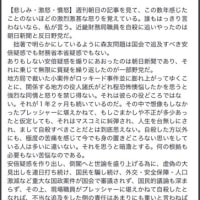
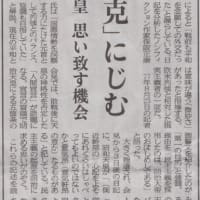
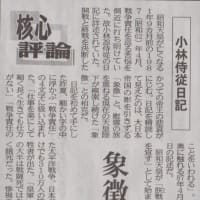


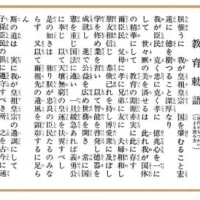



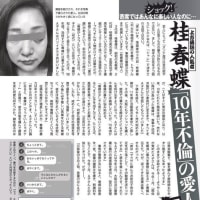
※コメント投稿者のブログIDはブログ作成者のみに通知されます